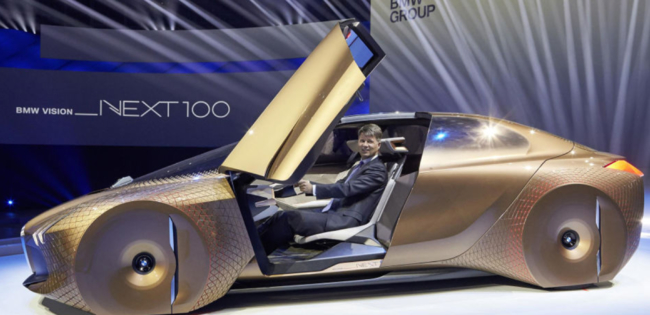BMW, Intel and Mobileye Target Fully Autonomous Driving by 2021
The race to deliver fully autonomous driving is speeding up as BMW Group, Intel and Mobileye are joining forces to combine expertise in the automotive, technology and computer industries and deliver fully automated driving into series production by 2021.
The BMW iNEXT model will be the foundation for BMW Group’s autonomous driving strategy and set the basis for fleets of fully autonomous vehicles, not only on highways but also in urban environments for the purpose of automated ridesharing solutions.
BMW Group, Intel and Mobileye are convinced that automated driving technologies will make travel safer and easier. The goal of the collaboration is to develop future-proofed solutions that enable the drivers to not only take their hands off the steering wheel, but reach the so called “eyes off” (level 3) and ultimately the “mind off” (level 4) level transforming the driver’s in-car time into leisure or work time.
This level of autonomy would enable the vehicle, on a technical level, to achieve the final stage of traveling “driver off” (level 5) without a human driver inside. This establishes the opportunity for self-driving fleets by 2021 and lays the foundation for entirely new business models in a connected, mobile world.
The companies have agreed to a set of deliverables and milestones to deliver fully autonomous cars based on a common reference architecture. Near term, the companies will demonstrate an autonomous test drive with a highly automated driving (HAD) prototype. In 2017 the platform will extend to fleets with extended autonomous test drives.
“Today marks an important milestone for the automotive industry as we enter a world of new mobility. Together with BMW Group and Intel, Mobileye is laying the groundwork for the technology of future mobility that enables fully autonomous driving to become a reality within the next few years,” said Mobileye Co-Founder, Chairman and CTO Professor Amnon Shashua.
“Mobileye is proud to contribute our expertise in sensing, localization and driver policy to enable fully autonomous driving in this cooperation. The processing of sensing, like our capabilities to understand the driving scene through a single camera already, will be deployed on Mobileye’s latest system-on-chip, the EyeQ®5, and the collaborative development of fusion algorithms will be deployed on Intel computing platforms. In addition, Mobileye Road Experience Management (REM) technology will provide real-time precise localization and model the driving scene to essentially support fully autonomous driving.”
Intel brings a comprehensive portfolio of technology to power and connect billions of smart and connected devices, including cars. To handle the complex workloads required for autonomous cars in urban environments Intel provides the compute power that scales from Intel® Atom™ to Intel® Xeon™ processors delivering up to a total of 100 teraflops of power efficient performance without having to rewrite code.
Category: Connected Fleet News











